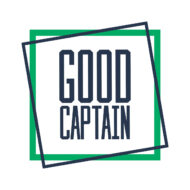IRPCS, or the International Regulations for Preventing Collisions at Sea, is a set of rules that govern the conduct of vessels to ensure safe navigation and prevent collisions on the water. These regulations, also known as COLREGs, provide a standardized framework for vessel operators to follow when encountering other vessels in various situations. Let’s explore the key aspects of IRPCS and how they contribute to safe boating.
General Principles:
The IRPCS emphasizes the importance of maintaining a proper lookout at all times. Vessel operators should actively monitor their surroundings to identify potential hazards and take necessary actions to avoid collisions. It is crucial to operate at a safe speed and exhibit proper navigation lights to ensure visibility to other vessels.
Definitions and Terminology:
IRPCS provides clear definitions for different types of vessels, such as power-driven vessels, sailing vessels, and vessels constrained by their draft. Understanding these definitions helps determine the applicable rules based on the type and characteristics of the vessels involved.
Steering and Sailing Rules:
The regulations outline specific rules for different scenarios, including meeting head-on, crossing situations, overtaking, and navigating in narrow channels. These rules define which vessel has the right of way and the actions required to avoid collisions. Key principles include giving way to vessels on the starboard (right) side and maintaining a constant course and speed in certain situations.
Lights and Shapes:
IRPCS specifies the required lights and shapes that vessels must display at night or in restricted visibility conditions. These lights help other vessels determine the type, size, and direction of a vessel, contributing to safe navigation and avoiding collisions. It is essential to understand the different light configurations for power-driven vessels, sailing vessels, and special circumstances.
Sound and Light Signals:
The regulations provide a standardized set of sound signals that vessels can use to communicate their intentions or warnings in situations where visibility is limited. These signals help vessels indicate their movements, such as altering course, overtaking, or sounding an alarm in an emergency.
Rules for Specific Types of Vessels:
IRPCS also includes specific rules for vessels engaged in specific activities, such as fishing, towing, or operating in restricted visibility. These rules ensure that vessels involved in specialized operations are aware of their responsibilities and can navigate safely while considering the needs of other vessels.
Annexes:
The IRPCS includes several annexes that provide additional information and guidelines on topics such as vessel lights and shapes, sound signals, and distress signals. These annexes offer detailed illustrations and explanations to support the interpretation and application of the regulations.
By following these regulations, vessel operators can navigate safely, maintain proper communication with other vessels, and prevent collisions at sea. It is important to study and familiarize oneself with the IRPCS to ensure compliance and promote safe and responsible boating practices.
